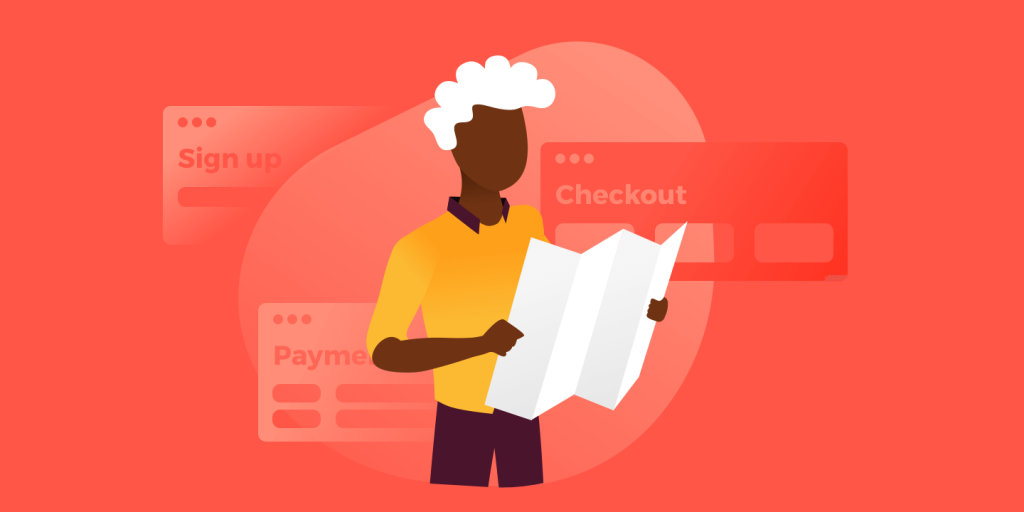Customer journey map is incredibly useful when it comes to providing companies with deeper insights into customer experiences, but how do you create and leverage it?
Chances are you’ve already got a fairly robust customer feedback system within your company—you’re paying attention to CSAT, you’ve got a thumb on the pulse of your customer effort score.
But there’s probably still more that you could be doing. Surveys like CSAT and NPS can, by their nature, be unreliable—they’re only offered at very specific times during the customer lifecycle and may not address the feelings of your entire customer base as much as a small subset.
Customers may not always feel compelled to offer their true and valuable insights about what they are being asked, or might not even be driven to answer at all. It’s important to make sure you ask at exactly the right time.
 How a Customer Journey Map drives Customer Feedback
How a Customer Journey Map drives Customer Feedback
That being said, it can be difficult to determine where and when the best places to ask are. One of the cleanest and simplest ways to do this is to create a customer journey map.
Customer journey maps are timelines that highlight key customer experiences. These can include anything from the very first time they view your company’s blog all the way through to when (or if!) they churn away from your product. To go a bit deeper, it also maps the emotions and motivations of customers as they use your product, and allows you to align them with how they’re contacting your teams.
So, for example, when a customer is trying to learn more about an advanced feature, are they more likely to reach out to support? Having this knowledge gives you deeper insight into what your customers actually need to be successful rather than what you think they need.
By using a customer journey map, you have a clear view into a few things:
- Where you’re interacting with customers
- How you’re interacting with customers
- Where there are opportunities to proactively help customers
- How communicating with your team impacts a customer’s feelings
Knowing the exact touchpoints customers encounter gives you the opportunity to sprinkle in extra interactions, or spread out conversations that are already occurring in order to boost responsiveness for your customer outreach.
For example, you may find that you’ve been sending three surveys back-to-back to customers within their first month of using your product—yikes! That’s a surefire way to tank your survey response rates and frustrate your customers. A customer journey map helps you uncover situations like that and start to move towards remedying them.
Not only that, but you’re also able to see where you might be able to implement the feedback that comes through your surveys more directly.
For example, if you know that you send a survey out to every customer on their three month anniversary of purchasing, taking a deep dive into what kind of insights you receive there can help to improve the first 90 days of customer onboarding. Taking what you learn and directly applying it to where it’s needed will be directly impactful to how your customers actually relate to your product.
So, great—we now know that customer journey maps are incredibly useful when it comes to providing companies with deeper insights into customer experiences, but how do you create and leverage them?
 Create a customer journey map
Create a customer journey map
The first step in creating a customer journey map is understanding who you are trying to reach. If you don’t already have an understanding of who your ideal customer is, that should be your priority—you’ll never know how to best serve someone unless you really understand who they are, what they are trying to accomplish and what motivates them.
So, start there.
Take into account both qualitative and quantitative measures when making your blueprint for the ideal customer. You should consider, for example, both how much they pay you per month as well as their pain points. This will give you a well-rounded picture to work with moving forward.
After you’ve figured out who you’re reaching, start to map out how you are reaching them. Take stock of every customer contact point that you have: on social media, on your blog, within your support organization—everything—marketing emails and automation count, too. Leave no stone unturned! Look through your Google Analytics tools and marketing software to make sure that you don’t miss any potential contact point or frequency.
With information about who you’re trying to serve, how you’re trying to serve them, and where your current fallback points are, you have a basic customer journey map.
By compiling this information together on a timeline, you can start to get a sense for trends of areas where more (or less!) reach out may be appreciated by your customers. It will also help you get an inventory for where most customer frustrations might be experienced.
For example, do you get a ton of survey responses when people are first getting used to using your product and none when you survey them at the end of the year?
While it may be true that no news is good news, finding another time to ask about your customers’ opinions could be valuable for providing additional, actionable insights.
 Identify places where you already talk to your customers
Identify places where you already talk to your customers
As you’re looking through the individual points of contact, start to pull in responses from any survey data that you already have.
Take the time to evaluate where there may be existing customer frustrations or challenges, and start conceiving how they might be resolved. You can find these struggles by looking at anything from cart abandonment, negative reviews or customer churn.
Knowing where you are already contacting customers can help you determine where additional contact might be useful or where you should scale it back to be more impactful. For example, if you are only contacting them once a year to ask how they feel about your product, there may be more opportunities to reach out or using different methods to get useful, differentiated information.
Along with the frequency of contact, knowing when you reach out to someone and receive feedback can help you better contextualize the information that you’re receiving. For example, if you hear consistently that, three months in, people are very likely to recommend your product, but a year in they are not likely to recommend your product, it shifts the perspective on the feedback—what’s happening by one year that is turning your customers off?
Paying attention to these nuances is important and valuable because they help you to better serve your customers and understand what they actually need and want.
 Find places that are dark spots in your product
Find places that are dark spots in your product
As you lay out your contact points on the timeline of a customer journey map, it also lets you see where you aren’t asking for information. Doing this helps you identify where you might not have enough data about how your customers are feeling to make an informed decision. For example, how often do you ask for customer insights about the purchasing process, or after cancellation? If you aren’t asking these kinds of questions, looking at a customer journey map can help shed light.
It’s almost just as bad to ask too few questions as it is to ask too many. Don’t keep your customers the dark—even if you aren’t regularly surveying them, give them the opportunity to share their feelings about your product and service regularly.
Conclusion
Collecting feedback on each of the major touchpoints in a customer’s journey is a great way to keep your thumb on the pulse of how they are feeling overall.
Chances are there are some things in your customer journey map that customers will be uniformly happy about, and others that frustrate or discourage them across the board.
Mapping your points of contact out and tracking that information helps you get a clearer picture into all of the ways that your product could be improved. It allows you to discover pieces of your product that you don’t have insights into and should be asking more about.
Overall, your understanding of your customer experience will be greatly improved and deepened by implementing and following a customer journey map.









